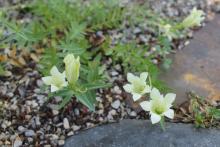Discussion continued from the Alpines July 2012 thread, here:
http://nargs.org/smf/index.php?topic=1121.msg19011#msg19011
Oh, why do I garden Cliff! What magnificent scenery. So I must have ovina; like the sound of divina.
This plant is one I have tried growing several times unsuccessfully - Bolax gummifer. I have it now in a slightly shaded narrow scree (pure gritty sand) alongside a raised bed, where it seems to be settling down. I love the foliage and it must be one of the most attractive alpine umbels.
Comments
Re: Alpines August 2012
The one in the background I suppose?
That might be a bit much to garden! Though if it came with flora, I wouldn't need to ;D
Tim, that Bolax is looking nice and tight!
Lori- cute Gentian :)
Re: Alpines August 2012
Lori - I haven't really seen flowers properly on Bolax but they must be very similar to the greenish flowers of Azorella. If you could imagine alpine umbels with really colourful flowers suddenly everyone would be growing them!
The gentian is nice, like a yellow form of septemfida. I have a couple of old books on the genus and there are so many species you never see these days (G. kurroo is an example that always stands out because the name is around but not the plant).
Re: Alpines August 2012
This plant is one I have tried growing several times unsuccessfully - Bolax gummifer.
A British colleague once sent me a tiny piece of this plant which faded away too quickly. I simply adore it and absolutely MUST grow it. Petunia patagonica is another (it lasted more than a year here). Does anyone in the U.S. grow these? Access would be very much appreciated!
Re: Alpines August 2012
Lori - I haven't really seen flowers properly on Bolax but they must be very similar to the greenish flowers of Azorella.
The reason I was asking was that I have seen flower colour cited as a distinguishing factor also between Bolax gummerifera (greenish-white flowers) and Azorella trifurcata (yellow flowers, which is very clear on my plant)- see the first comment below on the this misidentified photo (posted as Bolax gummifera but actually Azorella trifurcata):
http://www.botanicalgarden.ubc.ca/potd/2005/11/bolax_gummifera.php
Clearly, Bolax gummifera is a great deal harder to grow, of the two!
The name changes through time for both species may explain the lingering misconception that the two species names are synonymous:
http://www.theplantlist.org/tpl/record/kew-2667511
http://www.theplantlist.org/tpl/record/kew-2678931
Re: Alpines August 2012
Lori - this probably shows the inherent difference between the rigorous botanical description of plants and I must admit my own observations of growing them as a gardener. In this case growth habit and form is so distinguishing that the two cannot be confused, but this must be because Bolax has been grown for years in the UK and is quite familiar. When it comes to some of the other umbellifers (notoriously difficult plants to identify at times!), the botanical characteristcs become more and more important, and probably more and more up for debate. Species of Lomatium in America certainly seem very difficult to distinguish at times (to say the least), and often location must be as important a consideration as morphological characteristics.
I am aiming to amass more detailed observations on umbels (particularly alpine species) and write about them, but like as much as possible to describe plants from my own experience as a gardener growing them as well as from the literature. The South American species like Azorella and Bolax are really nice plants and many more are being grown, so I imagine even more scope for confusion!
Re: Alpines August 2012
Hi folks,
One from yesterday ...
Gentian purpurea high on the French-Swiss border at Le Tours near Chamonix Mont Blanc with the French peaks in the background. We have moved on to beautiful Lake Annecy today ... images to follow when time allows.
Kind regards to all.
Thanks Lori, Trond, Cohan and Tim for the very kind remarks.
Plus two images from the high alpine world above Chamonix.
Re: Alpines August 2012
Beautiful shots, Cliff!
Lori - this probably shows the inherent difference between the rigorous botanical description of plants and I must admit my own observations of growing them as a gardener. In this case growth habit and form is so distinguishing that the two cannot be confused...
Your excellent photo shows that very clearly. Unfortunately, there does seem to be a lot of confusion out there, for example, this Wiki entry for Bolax gummifera which shows a photo of Azorella trifurcata:
http://en.wikipedia.org/wiki/Bolax
:P
Re: Alpines August 2012
Such a beautiful place, Cliff! Must be hard to leave...
the purpurea is lovely too, especially with the view behind it :)
Re: Alpines August 2012
The gentian with the soft sky behind it is very beautiful. I wonder if those meadow gentians are grown much now? I never succeeded very well with lutea.
Re: Alpines August 2012
I grow Gentiana lutea but it doesn't bloom every year... as a matter of fact, it hasn't bloomed in some years, unfortunately. :( It is a large plant in a spot where it is slowly being encroached upon by a spruce, and is also probably drier than it would like; it needs to be moved, though I'm very hesitant to do so. I've read that the roots are very large (used for flavoring liqueurs, interestingly), and from the disastrous results of moving much smaller plants years ago, I'm not looking forward to it!
I would love to grow G. purpurea too. I germinated a couple a while back but had no success at keeping them alive.
Re: Alpines August 2012
Tim, I successfully grow a meadow gentian - Gentiana purpurea. Unfortunately not in a scenic place like what Cliff shows us (bravo Cliff!) ;)
G. purpurea is native to Norway but I have introduced it to our cabin in the subalpine zone (950m). I have collected plants from 3 different populations; the nearest not very far from here. They are growing in a meadow, previously used as a pasture. My plants selfsow and the population increase. However, it takes several years before seedlings flower. Seems that seeds germinate easily, at least in situ.
Here are a few of my plants. Notice the difference in flower development; they are from different populations. Seeds ripen late but I can try to collect some if you are interested.
Re: Alpines August 2012
Nice plants Trond! Yes I would be interested in seed if and when... I wonder if it might be possible to establish this like you have in a grassy sward? I have an area of long grass with bulbs but it might be too much competition. Would be interesting to try good established plants in pots.
Re: Alpines August 2012
Re the Bolax gummifera versus Azorella confusion: Azorella tricuspidata is a synonym for Bolax gummifera, whereas Azorella trifurcata is something else altogether.
Is there any wonder folks get muddled?!
P.S. my Bolax is dead..... vine weevils and wet summers, I think, but my Azorella trifurcata is just fine.
Re: Alpines August 2012
Trond, my Gentiana purpurea seedlings from your seed last year are looking quite happy, but I have yet to plant them out in this (for me) disastrous summer of hot-hot-hot drought followed by violent thunderstorms and tropical downpours where we lose power, got nothing done in the yard this whole weekend, scorching hot in the morning and early afternoon both weekend days, followed by violent storms where we lose power (for most of the weekend). I think G. purpurea is a "stunner", I hope that it succeeds here, and thank you for the seeds.
Re: Alpines August 2012
Nice plants Trond! Yes I would be interested in seed if and when... I wonder if it might be possible to establish this like you have in a grassy sward? I have an area of long grass with bulbs but it might be too much competition. Would be interesting to try good established plants in pots.
Seedlings seem to cope well with grass. I have even tried sowing directly in the turf - in a place where the grass was thingrowing due to some shrubs, which I removed. It worked very well.
You are welcome, Mark. Hope your seedlings continue to look happy even with your totally different climate!
Re: Alpines August 2012
Saxifraga umbellulata v. pectinata, finally opening its blossoms: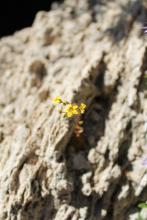
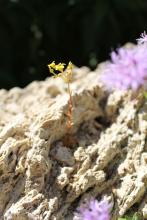
Update on Plantago urvillei - the blossoms are pink now, and rather charming: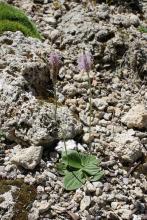
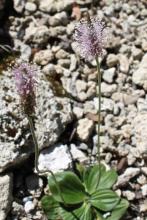
Repeats, also, of Erigeron aureus and Acantholimon kotschyi ssp. laxispicata: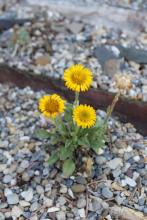
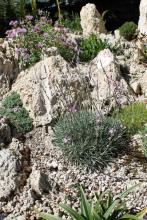
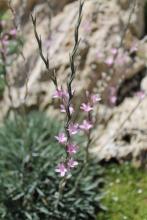
Re: Alpines August 2012
Lori, that is the COOLEST Plantago I ever did see!!!! Where is it from? I had no idea any Plantago had flowers of color, typically they are green to whitish.
Re: Alpines August 2012
Mark, the seeds were collected on Olkhon, Siberia (an island in Lake Baikal, http://olkhon.siberia.com/) in grassland. (I got the seeds from Holubec, though they were collected by a third party, N. Nepriakhina.)
http://www.theplantlist.org/tpl/record/tro-25200440
I started the seeds this past winter; of several seedlings planted out, only this one is blooming. The basal rosette is perfectly flat and 2" x 3.5", and the flower stems are 6" tall. It's pretty cute at present!
Here's another one blooming from seed this past winter - Antirrhinum molle, a perennial snapdragon: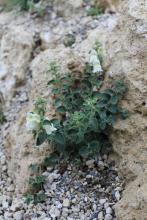
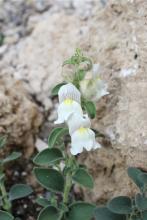
I hope some of these seedings will survive to replace my very old, worn out plant that has started declining from year to year.
My anemic, little mystery plant has turned out to be Mimulus cardinalis... must have been old seeds in the reused soil, I guess: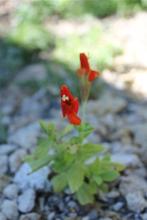
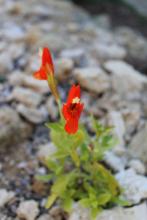
Re: Alpines August 2012
Saxifraga umbellulata - a tiny gem! Anthirrinum molle looks interesting. Something to seek out.
Plantago urvillei looks very similar to the native P. media, which is common here and regarded (by me at least) as the most gardenworthy species of the native ones. Maybe P. urvillei is a little more refined.
Re: Alpines August 2012
I looked up Plantago media, as I thought it might be a worthy garden plant, too. But it is already introduced in America, and seems to be marching through the United States and Canada on its own. I wouldn't want to add to that! Plantago urvillei, on the other hand, I would expect to be more behaved, at least in my climate. A very cute species!
Re: Alpines August 2012
Campanula zoysii is looking delightful on a deep gritty raised bed at the moment. We have had an unusually wet and cool summer on and off and this may have led to a second flush of flowering. Gives me hope to try some of the choice Rocky Mountain species.
Re: Alpines August 2012
Nice, Tim! That's one I've never succeeded with... killed the plants I've bought and never managed to germinate seeds either. And a second flush of flowering yet! :)
Crepis pygmaea, from seed this past winter, has put out another bloom... 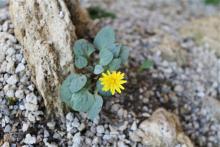
Here's a shot of our native Crepis nana, for comparison: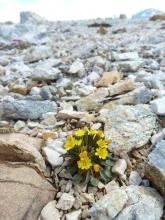
Is this Gentiana paradoxa? That's what I show on the map, but I've moved this plant around a couple times and may have got mixed up. I'm not sure the foliage is narrow enough for G. paradoxa.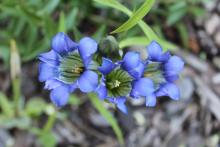
Re: Alpines August 2012
Very nice flowers on the Plantago, Lori! Always love to see Crepis nana too :)
Tim, that would be a great show of flowers for round one!
Speaking of Saxifraga, I have some of this year's seed to sow- should I plant them now or wait for fall for stratification, or spring for warm germination?
Re: Alpines August 2012
Speaking of Saxifraga, I have some of this year's seed to sow- should I plant them now or wait for fall for stratification, or spring for warm germination?
I'm sure no expert but it seems to me that the ones I've tried, or looked up, have seemed to require cold stratification, so I would tend to wait until later (if you're leaving them outside) or I would stratify them indoors. I hope those with more experience will comment!
Lactuca intricata seems to mostly be producing one flower at a time (loads of buds though), but at least I caught 3 open today! (From seed this past winter):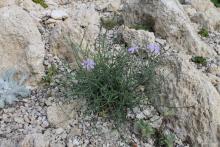
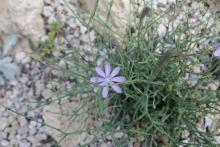
These teensy Primula scotica on the shadier side of the tufa garden are now in bloom; I'm a little surprised how well they take the drier conditions here.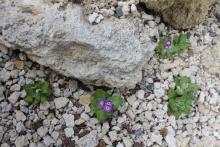
Cancrinia tianshanica, from seed this past winter, with a bud: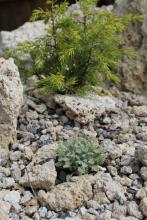
Erysimum leptophyllum, from seed this past winter. (I appreciate seeing some bloom, no matter how modest, in the event they don't winter over! )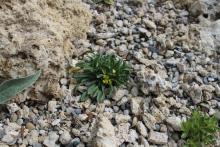
An old bedraggled Antirrhinum molle(? - every time I refer to this, I probably call it something different so please tell me if you know what its proper name is), very woody and declining (the survivor of two plants I bought in 2001 - amazing hardiness!):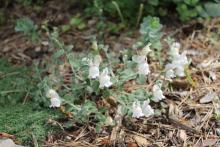
Gentiana septemfida: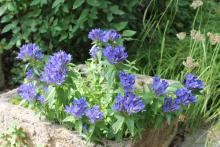
Re: Alpines August 2012
You seem to be having a good season Lori, I'm having a stinker.
Re: Alpines August 2012
Due to the weather still, I assume, David? What a bummer - summer is so short in the northern latitudes that one can't help but feel a bit cheated if conditions are poor!
Re: Alpines August 2012
Lori, your Antirrhinum seems to have ob-opposite leaves. I wouldn't have a clue, but might that help with an identification?
Re: Alpines August 2012
Hmm, very observant, Rick. I can compare them to this year's seedlings of A. molle. The flower colour (yellow throat, purple guidelines on upper petal) seem to match A. molle (from googling) but I don't have detailed descriptions of Antirrhinum species to compare.
Edit: ... and the old plant does seem to match the seedlings in that respect.
Re: Alpines August 2012
that Lactuca is getting some nice texture :)
Very nice to see the Antirrhinum hardy..
I have quite a few Cyclamen purpurascens seedlings that have survived outside now (some still in pots) for a couple of years; those in the ground were put there about a year ago and have not exactly taken off yet, though looking healthy, may have to try some different kinds of spots (though they aren't all the same) amazingly, one tiny plant with two little leaves has a bud! Some that I kept indoors as insurance flowered last spring already..
Re: Alpines August 2012
Great news on the Cyclamen, Cohan! Whenever I poke around under the plants in the area where mine are planted, I find several single leaf seedlings... ants distribute the seeds around, due to their interest in the elaisome on the seed, apparently. I should gather them up and plant them where they'd be visible... (I suppose that goes without saying. ;D)
Re: Alpines August 2012
I have never had a cyclamen self-seed although one of our other members has had hederifolium self-seed.
That perennial snapdragon only survived one winter here but I see a seedling popping up that will hopefully survive this winter. I'll echo Mark that your Plantago is indeed a keeper!
Primula glomerata has been blooming here for nearly a month. It is the last of the primroses to bloom, but florindae still has some blooms and saxatilis is beginning to rebloom again.
Re: Alpines August 2012
I should gather them up and plant them where they'd be visible... (I suppose that goes without saying. ;D)
One of these days!
As I'm writing, the news is showing results of a big hail storm in Calgary yesterday- hope it didn't hit your area? We had thunderstorm watches and warnings yesterday evening, but didn't so much as see any storms passing by on their way to wreak havoc farther east...
Todd, that's a nice one for long blooming..
Re: Alpines August 2012
Beautiful, Todd!
Cohan, we did duck that hailstorm, fortunately! There was some large hail (no damage) and a few millimeters of rain here last night but the brunt of it missed us. The news says it hit other parts of the NW hard - lot of photos of golf-ball size hail posted!! - reports from car dealerships of car windows being broken and side mirrors knocked off! Same of course for cars parked outside at people's houses, and also some house windows broken. Sheesh, what a climate!
Re: Alpines August 2012
Todd, lovely Primula glomerata! It is somewhat similar to P capitata, isn't it?
Lori, hail as big as golf-balls :o Somebody could get killed! The biggest hail I've ever seen were like peas in size.
Re: Alpines August 2012
They showed a lot of pictures of that hail and damage on tv..
Yesterday was warm here (25C) and very humid and then we had a significant thunderstorm today- we went to town earlier, wondering where all the rain forecast for today was, and it finally arrived in force before we left town- I was in a supermarket and the power went off- luckily they have generators unlike where I work, so some lights stayed on and electronic cash registers were still working.. outside was pouring and blowing, and there had been some small hail while I was inside. The drive home was low visibility between heavy rain blowing almost sideways and the heavy spray from vehicles, especially the constant big trucks.. Calm now, though cloudy, 12C, possibility of more rain/storms later, then supposed to be a sunny week, 26C saturday...
Re: Alpines August 2012
Beautiful, Todd!
Cohan, we did duck that hailstorm, fortunately! There was some large hail (no damage) and a few millimeters of rain here last night but the brunt of it missed us. The news says it hit other parts of the NW hard - lot of photos of golf-ball size hail posted!! - reports from car dealerships of car windows being broken and side mirrors knocked off! Same of course for cars parked outside at people's houses, and also some house windows broken. Sheesh, what a climate!
Lori,
on my only visit to Calgary [so far!] after the NARGS conference in 1999 we drove down from Banff to visit gardens and could see a hail-storm ahead of us! When we got to the gardens many were the worse for wear. However one garden owner prodly showed us her Meconopsis punicea in flower - how had it survived? She had stood outside in the hail holding an umbrella over the flowers till the storm had passed! The climate was NOT going to deprive her of her moment of glory showing those stunning red flowers to the visiting masses!
cheers
fermi
Re: Alpines August 2012
That's funny! not feasible in general, sadly...
Re: Alpines August 2012
Yes, I can understand that impulse, Fermi! If I had Meconopsis punicea in bloom, I might have done the same! ;D ;D
Potentially fatal indeed, Trond - fortunately, no injuries were reported in the news. I hate to think how livestock in fields would cope with horrible storms like that.
Recognizing that the damage had been spotty the other night, Mother Nature did take another swipe at us today... no hail here but some elsewhere, with power outages and winds of up to 100 km/hr; the temperature dropped from over 20 deg C to 10 deg C in about an hour. At least the bit of rain was welcome!
Re: Alpines August 2012
Anaphalis cf. monocephala, seedlings from the past winter, have bloomed constantly throughout the season with little strawflower-like flowers: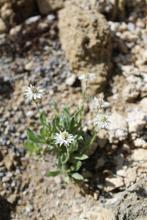
Saponaria pumilio has also been in constant bloom throughout the season: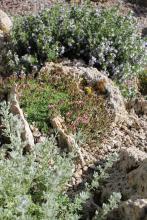
A division of Campanula 'Haylodgensis', bought at the CRAGS spring sale: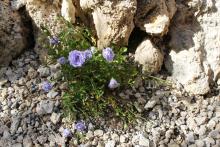
The apetalous flower of Cancrinia tianshanica has finally opened on a seedling from this past winter - not too impressive, but maybe someday ;) ... I found this poor little plant uprooted the other day, so it's not looking its best: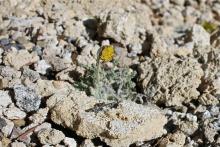
Primula scotica continues to bloom... pretty odd for the end of August: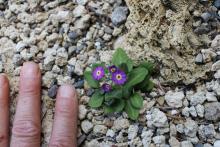
Satureja montana ssp. illyrica in bloom and full of bees: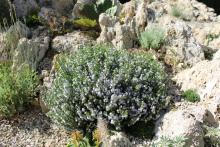
Re: Alpines August 2012
More nice stuff, Lori!
I like the Anaphalis- recently saw a photo of a really fat white fuzzy species, very cool! though I can't remember where I saw it... here? lol
Cancrinia is looking really good too- is this supposed to spread to form a mat?
How tall is the Satureja?
Re: Alpines August 2012
Thanks, Cohan. Please mention the name of the Anaphalis if you think of it - sounds nice!
I don't know that the Cancrinia would form a mat really, as it is tap-rooted - I think I'd expect a small plant, as from Holubec's photos:
http://holubec.wbs.cz/3Borohoro-Shan_-Xinjiang.html
... assuming it winters over that is. ;)
The Satureja is 20cm tall (~8") with a few stems a bit taller, and ~40cm across. I never know what will survive and what won't when I plant, so it is actually crowding a couple of things, however, as the other plants are spring bloomers and seem happy enough, it might work out.
Re: Alpines August 2012
I searched a little for the Anaphalis with no luck-- I think I must have seen it on a page with some seedling I was researching, so maybe I will see it again...lol.. usually I'd save something like that, so I'm thinking maybe its on some page I expected to remember- yet clearly don't...lol
Oh- I remember seeing those photos of Cancrinia- love it :) Hard to tell from the images whether it might be slightly stoloniferous, or they could be seedmates... a little clump is nice..
Nice modest height on the Satureja :)
Re: Alpines August 2012
Lori - you grow so many fascinating plants that it is thoroughly inspiring. I haven't come across that nice Serratula; the only species seen here is seoanei, not quite flowering yet and with purple flowers. Those white flowers are very distinctive. Is it another plant from wild collected seed?
Jasione heldreichii is one of the nicest late flowering alpines in our garden and loves cracks and crevices between rocks - quite a robust plant growing to around 18" across but dying right back in the winter.
Re: Alpines August 2012
Nice flowers on Jasione! Is it flat or is that just a trick of the photo?



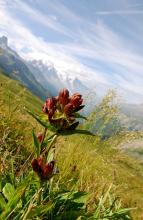
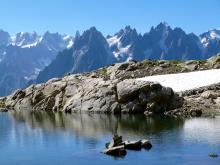
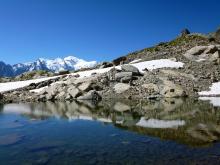











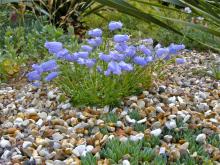

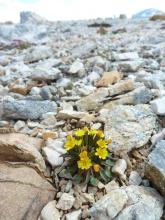

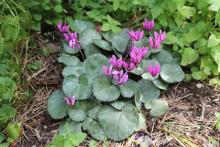
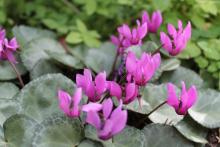









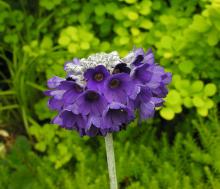
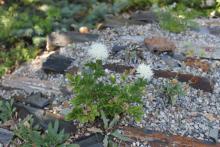







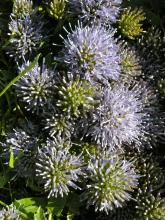
It's very nice to see Bolax gummifera, especially photographed so well, Tim. The foliage contrast between it and Azorella trifurcata (which I actually bought as "Bolax gummifera") is quite apparent:
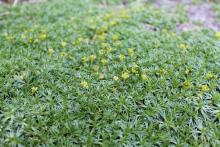
Does your Bolax have white/greenish flowers?
Gentiana gelida:
